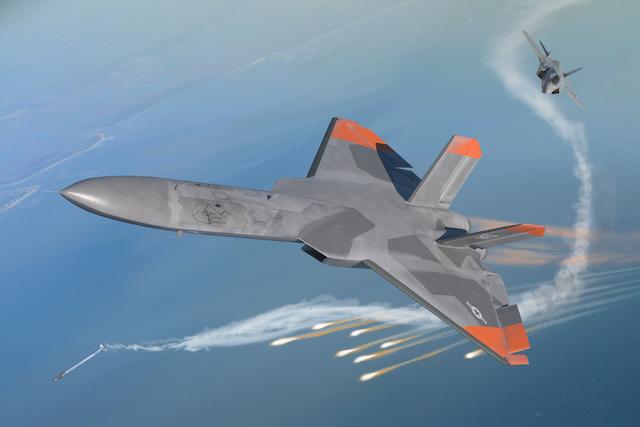
A concept image shows a Fifth Generation Aerial Target (5GAT) releasing chaff during an evaluation of a heat-seeking missile fired by a Lockheed Martin F-35.
Credit: Sierra Technical Systems
A large, jet-powered aerial target designed to loosely approximate China’s J-20 fighter crashed only seconds into its first flight three years ago, but a Pentagon office has revived the program with a nearly $80 million contract award for the small business contractor to refine the design, build...
Subscription Required
This content requires a subscription to one of the Aviation Week Intelligence Network (AWIN) bundles.
Schedule a demo today to find out how you can access this content and similar content related to your area of the global aviation industry.
Already an AWIN subscriber? Login
Did you know? Aviation Week has won top honors multiple times in the Jesse H. Neal National Business Journalism Awards, the business-to-business media equivalent of the Pulitzer Prizes.





